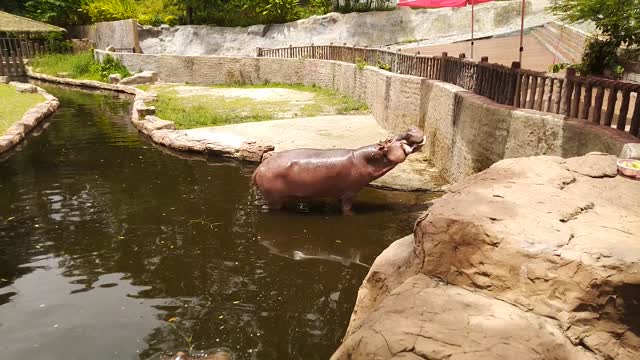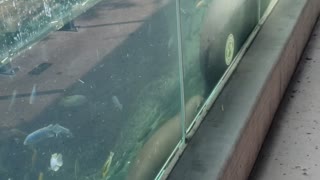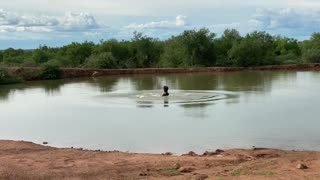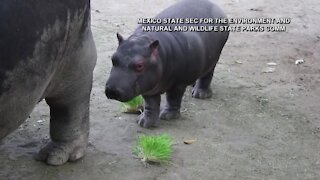Premium Only Content

This is hippo!
Look, this is hippo!!
The hippopotamus, also called the hippo, common hippopotamus or river hippopotamus, is a large, mostly herbivorous, semiaquatic mammal and ungulate native to sub-Saharan Africa. It is one of only two extant species in the family Hippopotamidae, the other being the pygmy hippopotamus.
Hippopotamuses love water, which is why the Greeks named them the “river horse.” Hippos spend up to 16 hours a day submerged in rivers and lakes to keep their massive bodies cool under the hot African sun. Hippos are graceful in water, good swimmers, and can hold their breath underwater for up to five minutes. However, they are often large enough to simply walk or stand on the lake floor, or lie in the shallows. Their eyes and nostrils are located high on their heads, which allows them to see and breathe while mostly submerged.
Hippos also bask on the shoreline and secrete an oily red substance, which gave rise to the myth that they sweat blood. The liquid is actually a skin moistener and sunblock that may also provide protection against germs.
What is a hippo?
There are two species of hippos — the large/common hippo and the smaller relative, the pygmy hippo. Hippos are the third-largest living land mammal, after elephants and white rhinos. Despite their large and bulky appearance, they have adaptations to their semi-aquatic environments allowing them to move swiftly on both water and land. Their feet have four-webbed toes that splay out to distribute weight evenly and therefore adequately support them on land, and their short legs provide powerful propulsion through the water. The pygmy hippos digits are more spread out and have less webbing and, proportionally, their legs are longer relative to its body size. They both have skin tones of purple-gray or slate color, with brownish-pink coloring around their eyes and ears. They have very thick skin that is virtually hairless except for the thick bristle-like hair on their heads and tails. The outer layers of skin are quite thin, making them prone to wounds from fighting. Their flat, paddle-like tail is used to spread excrement, which marks territory borders and indicates status of an individual. Their powerful jaws are capable of opening up to 150 degrees revealing their enormous incisors.
-
 6:11
6:11
Buffalobwana
4 years agoHippo Hunt in Zambia
24 -
 0:13
0:13
ImitatorDei
4 years ago $0.03 earnedAdorable Pygmy Hippo
199 -
 0:27
0:27
shasta2001
4 years agoHazel's hippo encounter
1071 -
 0:16
0:16
Addy Alive!
4 years ago $0.01 earnedHippo celebrates at the wateringhole...
307 -
 0:20
0:20
Vampyres32
4 years agoChance the Hippo
25 -
 0:31
0:31
LaylaLerma5
4 years agoA Little Hippo in November
16 -
 1:00
1:00
ViralHog
4 years ago $0.02 earnedGrey Heron Surfs on a Hippo
226 -
 0:52
0:52
WPTV
4 years agoMexican zoo celebrates birth of baby hippo
56 -
 0:39
0:39
Hata
4 years ago $0.43 earnedThe hungry hippo
190 -
 0:17
0:17
wildlief
4 years agoHeron catches a ride on hippo - South Africa
9